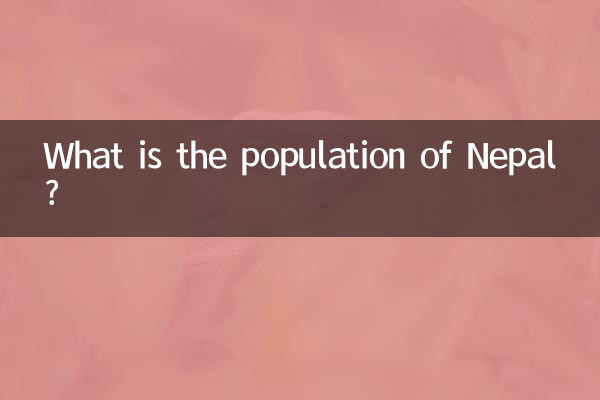What is the population of Nepal? ——Latest data and analysis of global hot spots
As a landlocked country in South Asia, Nepal's demographic structure and changes have always been one of the focuses of international attention. This article will combine the hot topics around the world in the past 10 days, structure the population data of Nepal, and analyze relevant social hot spots.
1. Core population data of Nepal (latest statistics in 2023)

| index | data | global ranking |
|---|---|---|
| total population | About 30.5 million | No. 49 |
| population density | 203 people/square kilometer | No. 65 |
| annual growth rate | 1.1% | No. 112 |
| urban population ratio | 21.6% | No. 183 |
2. Analysis of recent hotspot correlations
1.Immigration phenomenon: According to the World Bank report, Nepal’s overseas migrant workers account for 7% of the total population, mainly going to the Middle East and Southeast Asian countries. Recent topics such as the construction of Qatar World Cup venues have once again drawn attention to labor rights in Nepal.
2.climate change impacts: The latest United Nations report points out that melting glaciers in the Himalayas may affect the drinking water safety of 23% of Nepal’s population. This topic continues to ferment in the field of environmental protection.
| affected area | population ratio | Main risks |
|---|---|---|
| alpine areas | 18% | water shortage |
| central valley | 62% | flood disaster |
| southern plains | 20% | crop yield reduction |
3.digital transformation: The number of Internet users in Nepal has exceeded 22 million (accounting for 72% of the total population). Recently, "digital payment penetration rate increased by 40% annually" has become a hot topic in the technology media.
3. Population structure characteristics
| age group | Proportion | international comparison |
|---|---|---|
| 0-14 years old | 30.2% | Higher than global average (25%) |
| 15-64 years old | 63.5% | Close to the Asian average |
| Over 65 years old | 6.3% | Below the age standard |
4. Regional population distribution hotspots
The Kathmandu Valley has become the most densely populated area in the country with a population of 5.4 million. It has recently been featured in the Emerging Markets feature of The Economist due to its "smart city" construction plan. The population loss rate in the western mountainous areas has exceeded 2% for three consecutive years, triggering the government to introduce special subsidy policies.
5. Latest forecasts from international organizations
Models from the United Nations Population Division show that Nepal will reach a peak population of about 34.8 million in 2045. It is worth noting that the fertility rate has dropped from 3.4 in 2000 to 2.1 (replacement level), which is 7 years earlier than expected.
Through the above structured data analysis, it can be seen that Nepal’s population issues are deeply intertwined with the global development agenda. From labor rights to climate adaptation, the mountainous country’s demographic dynamics will continue to attract international attention.

check the details

check the details